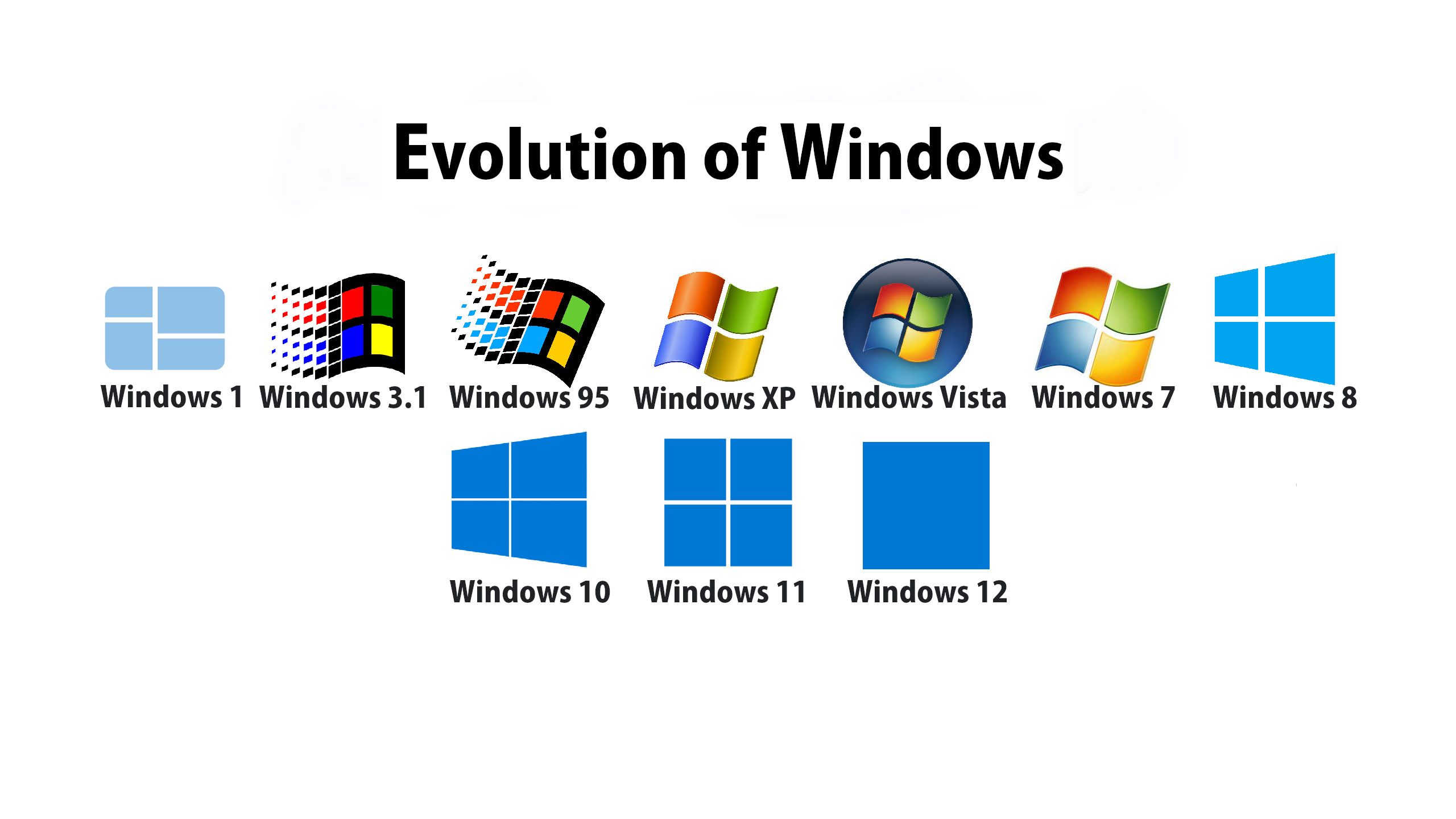Windows, the ubiquitous operating system developed by Microsoft, has been an integral part of the computing landscape for several decades. Its journey began in the early 1980s and has since witnessed a remarkable evolution, constantly shaping the way we interact with technology. In this article, we will delve into the rich history of Windows, highlighting its major milestones and significant developments.
A Brief History of Windows: The Inception
In the realm of personal computing, Windows revolutionized the graphical user interface (GUI) and made computers more user-friendly. Its roots trace back to 1981 when Microsoft embarked on a mission to develop a new operating environment. The journey began with Microsoft’s Co-founder Bill Gates announcing “Interface Manager,” which would later be rebranded as “Windows.”
Early Windows Versions: Paving the Way
Windows 1.0: The Debutant
In 1985, Microsoft launched Windows 1.0, an operating environment that introduced GUI to PC users. Although limited in functionality, it provided a multitasking environment and enabled users to navigate through programs using a mouse, setting the stage for future advancements.
Windows 2.0 and 2.1: Expanding Horizons
Building upon its predecessor, Windows 2.0 arrived in 1987, bringing significant improvements, including overlapping windows and support for expanded memory. Windows 2.1 followed shortly, introducing subtle refinements.
Windows 3.0: A Game-Changer
In 1990, Microsoft unleashed Windows 3.0, a landmark release that catapulted the popularity of the operating system. Enhanced performance, improved graphics, and an array of applications made it the standard choice for PC users worldwide.
Windows 95: The Iconic Launch
Windows 95: The Start Menu and Beyond
August 24, 1995, marked a turning point in Windows history with the launch of Windows 95. It introduced the iconic Start menu, taskbar, and plug-and-play functionality, setting new standards for user experience.
Windows 98: Refining the Experience
Windows 98, released in 1998, focused on enhancing stability and hardware support. It became a favorite among consumers and contributed to the rapid adoption of personal computers in homes and businesses.
Windows ME: The Mixed Legacy
Windows Millennium Edition (Windows ME) arrived in 2000, aiming to bridge the gap between consumer and professional editions. However, it faced criticism for its instability and performance issues.
The New Millennium: Windows XP and Beyond
1. Windows 2000: For Businesses
- In 2000, Microsoft released Windows 2000, targeting business users with its robustness and advanced networking capabilities. It laid the groundwork for future Windows versions’ stability.
2. Windows XP: The Reigning Champion
- October 25, 2001, witnessed the advent of Windows XP, one of the most beloved and enduring Windows versions. Its sleek interface, improved performance, and increased hardware compatibility made it a global hit.
3. Windows Vista: Ambitious Yet Controversial
- Windows Vista, launched in 2007, introduced a visually stunning interface and several innovative features. However, performance issues and compatibility concerns led to a mixed reception.
4. Windows 7: A Resounding Success
- Windows 7, released in 2009, redeemed Microsoft’s reputation with its refined interface and enhanced performance. It quickly became a crowd-favorite, effectively replacing the older Windows versions.
The Modern Era: Windows 8 and Beyond
Windows 8: A Bold Leap
Windows 8, introduced in 2012, aimed to bridge the gap between traditional PCs and touch-enabled devices. Its tile-based Start screen sparked debates among users, but it embraced the shift towards mobile computing.
Windows 10: The Universal Platform
On July 29, 2015, Microsoft launched Windows 10, positioning it as the final version of Windows. With regular updates and continuous improvements, Windows 10 offered a universal platform across devices.
Windows Evolution: Key Innovations
Over the years, Microsoft Windows has undergone remarkable transformations, introducing key innovations that have shaped the computing landscape. Let’s explore some of the most significant advancements:
- Microsoft Edge: The Browser Leap With the launch of Windows 10, Microsoft bid farewell to Internet Explorer and ushered in Microsoft Edge, a modern web browser. Edge offered improved performance, better security features, and seamless integration with Microsoft services, making it a popular choice among users.
- Windows 10 Anniversary Update: Celebrating Improvements In 2016, the Windows 10 Anniversary Update was released, marking a year since the operating system’s launch. This update brought forth a plethora of enhancements, including the introduction of Windows Ink, empowering users to draw and annotate directly on their screens. Additionally, it enhanced Cortana, the virtual assistant, and further improved Windows Hello authentication for enhanced security.
- Windows Subsystem for Linux (WSL): Embracing Open Source Embracing the growing trend of open-source development, Microsoft introduced the Windows Subsystem for Linux (WSL) in 2016. WSL allowed users to run Linux commands directly within Windows, fostering collaboration between developers working on different platforms.
These key innovations have not only improved the Windows experience but have also shown Microsoft’s commitment to staying at the forefront of technology. With each update, Windows continues to evolve, adapting to the changing needs of users and setting new standards in the world of operating systems.
Windows in the Cloud: Azure
Windows extended its reach to the cloud with the introduction of Azure, Microsoft’s cloud computing platform, in 2010. Azure enabled businesses to deploy and manage applications seamlessly.
The Future of Windows: Windows 11
Windows 11: A New Chapter
In June 2021, Microsoft unveiled Windows 11, the next major version of its iconic operating system. With a redesigned Start menu, enhanced multitasking, and improved gaming features, Windows 11 promises to be a significant step forward.
Windows 11 Release and Features
Scheduled for release later that year, Windows 11 introduces a more streamlined interface and improved integration with Microsoft 365 services. The introduction of Android app support further enhances its versatility.
FAQs
Q: What was the first version of Windows released by Microsoft?
Windows 1.0 was the first version of Windows released by Microsoft in 1985.
Q: When did Windows 10 come out, and why was it significant?
Windows 10 was released on July 29, 2015. It was significant because Microsoft positioned it as the final version of Windows, emphasizing continuous updates and improvements.
Q: What were the key innovations in Windows 10?
Windows 10 introduced Microsoft Edge, a modern web browser, the Windows 10 Anniversary Update with various improvements, and the Windows Subsystem for Linux (WSL) to embrace open-source development.
Q: What are some of the notable features of Windows 11?
Windows 11 boasts a redesigned Start menu, enhanced multitasking, improved gaming features, and Android app support.
Q: Is Windows 11 a free upgrade for Windows 10 users?
Yes, Windows 11 is a free upgrade for eligible Windows 10 users who meet the system requirements.
Q: What is Microsoft Azure?
Microsoft Azure is Microsoft’s cloud computing platform, allowing businesses to deploy, manage, and scale applications in the cloud.
From its humble beginnings in the 1980s to the forthcoming Windows 11, the history of Windows is a testament to continuous innovation and adaptability. As the world of technology continues to evolve, Windows remains a steadfast companion, driving digital advancements and empowering users to accomplish more. As we look ahead, the future of Windows appears promising, with Windows 11 poised to continue the legacy of one of the most influential operating systems in history.

